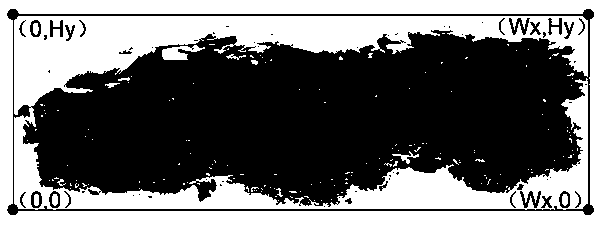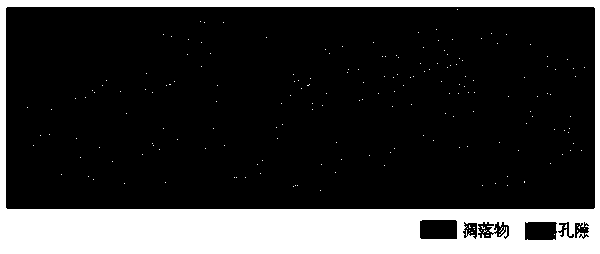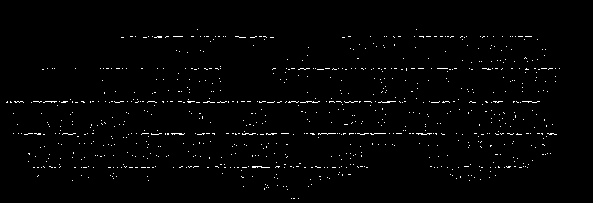Method for measuring space structure parameters through scanning image of forest litter
A technology for scanning images and spatial structures, applied in the field of forest ecology, can solve problems such as research methods or technical approaches for the spatial structure of forest litter that have not yet been discovered
- Summary
- Abstract
- Description
- Claims
- Application Information
AI Technical Summary
Problems solved by technology
Method used
Image
Examples
Embodiment Construction
[0032] In order to gain an in-depth understanding of the method of measuring spatial structure parameters using forest litter scan images, combined with Figure 1 to Figure 4 Described as follows, the concrete implementation steps of this method are as follows:
[0033] (1) Acquire litter litter scanning images:
[0034] Select the litter sample in the field, fill the sample with polyethylacrylate, embed the sample with paraffin after drying, cut it into 1cm thick squares with a hacksaw along the longitudinal section after cooling, and flatten it with a sharp blade One side of the block; immerse the smooth side of the block in xylene at a depth of 1-2mm to melt off the 1-2mm thick paraffin of the sample block; place the block with the side of the block that has melted the paraffin down on the scanner to obtain a JPG with a resolution of 1200dpi format scanned images.
[0035] (2) Scanned image preprocessing:
[0036] The scanned image was rotated with Photoshop CS5 soft...
PUM
 Login to View More
Login to View More Abstract
Description
Claims
Application Information
 Login to View More
Login to View More - R&D
- Intellectual Property
- Life Sciences
- Materials
- Tech Scout
- Unparalleled Data Quality
- Higher Quality Content
- 60% Fewer Hallucinations
Browse by: Latest US Patents, China's latest patents, Technical Efficacy Thesaurus, Application Domain, Technology Topic, Popular Technical Reports.
© 2025 PatSnap. All rights reserved.Legal|Privacy policy|Modern Slavery Act Transparency Statement|Sitemap|About US| Contact US: help@patsnap.com



